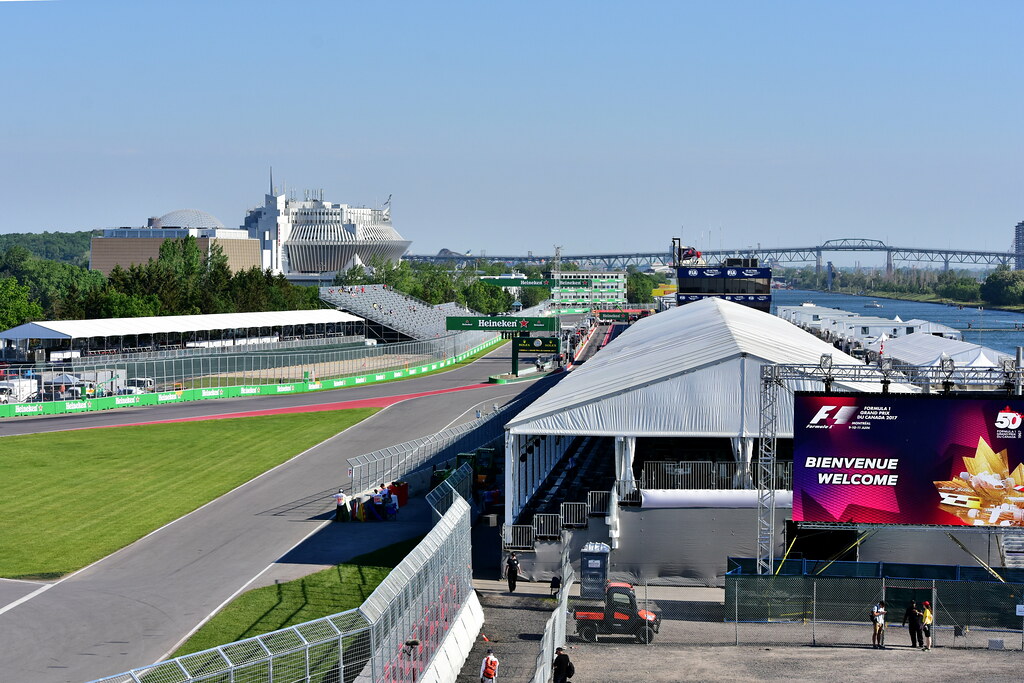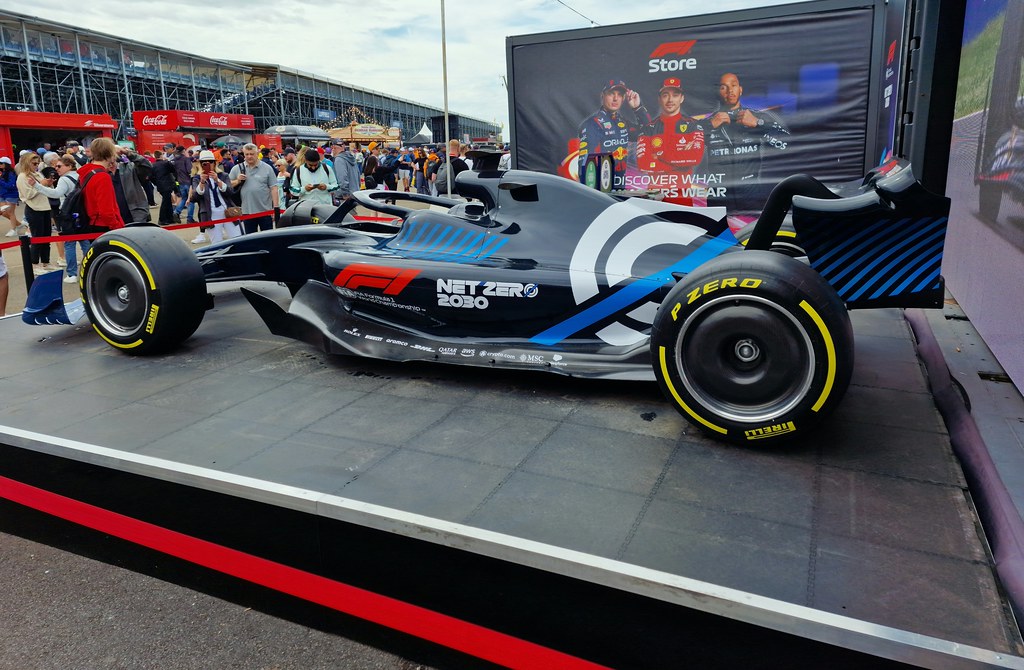Since its introduction in Formula 1 in 1978, the Canadian Grand Prix track has stood out from other rounds in the championship. With always unpredictable notes, Montreal has distinct specifications. So let’s review why the Canadian Grand Prix track is so good.
The Montreal F1 Track’s Main Features That Make It Special
The Placement Or The Unpredictable Factor Of The Weather
Rain is expected in…
So, the main feature of the Canadian Grand Prix is its unclear forecast. And that is why this race stands out, placed between the European Formula 1 rounds. Due to the weather conditions, the race in Canada cannot be held earlier or later than June.
Of course, the constant waiting for the forecast to change adds to the excitement of the F1 strategy, as rain is always something the teams keep in mind, even if the Hydrometeorological Center promises not to.
So, the Canadian Grand Prix track is pretty good and has traditionally been at the top of F1’s most exciting races, but that is not the only reason.
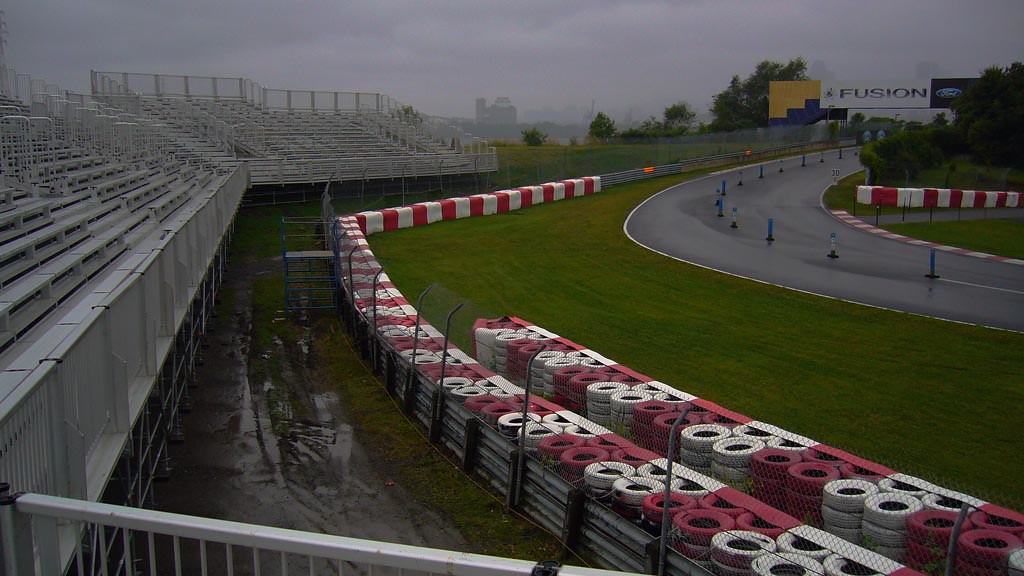
The Specific Layout Of The Montreal Circuit
The Montreal Circuit was built with a love of overtaking. That is what comes from its origins.
The second name of Montreal is the Circuit Gilles-Villeneuve because Gilles Villeneuve was the first driver to win the Canadian GP, and after a tragic accident in 1982, it was named in his honor.
However, the truth is that it is challenging to overtake at the Circuit Gilles-Villeneuve, although the possibility always exists. It drives the drivers more, but on the other hand, it is a mental trap, thanks to the track’s layout.
What’s the Montreal Circuit layout?
It is the straights, a lot of chicanes, and one hairpin for a total distance of just 4.361 km with 2 DRS zones in Sectors 1 and 2, right? Yes, but look how these are blended up, whispering to driverss: ‘You can just go faster.’
Straight from the shoulder.
Drivers enter Sector 1, and after a twisty adventure, they inhale with a chance because there is a DRS zone before Turn 6.
Then, it is an uneasy web of turns at Sectot 2 and, again, the chance. It is the DRS zone before the long hairpin, Turn 10.
Here, the drivers break as much as possible but very carefully because it is so easy to lock up, go wide, or lose speed, power, drive, motivation, and everything.
However, the journey doesn’t end at this point, as the following launches the real fun – the longest straight that ends with a real test to pass!
The firmed ‘Wall of Champions’ – is a spice of the Canadian Grand Prix track.
It is a hard-breaking chicane, where drivers slow down from over 300 km/h to negotiate a tight right-left with kerbs, but if anything goes wrong – the game is over.
Then, the option to catch the following car under braking for Turn 1, and the chain is repeated for 70 laps.
Yes, the winding layout makes the Canadian Grand Prix the unique one.
Furthermore, the Montreal F1 track differs from the others by its low average speed.
So the mental trap is the circuit being fast, but there is always not enough downforce, which forces the drivers to continuously take the foot off the gas pedal, as even a tiny mistake costs.
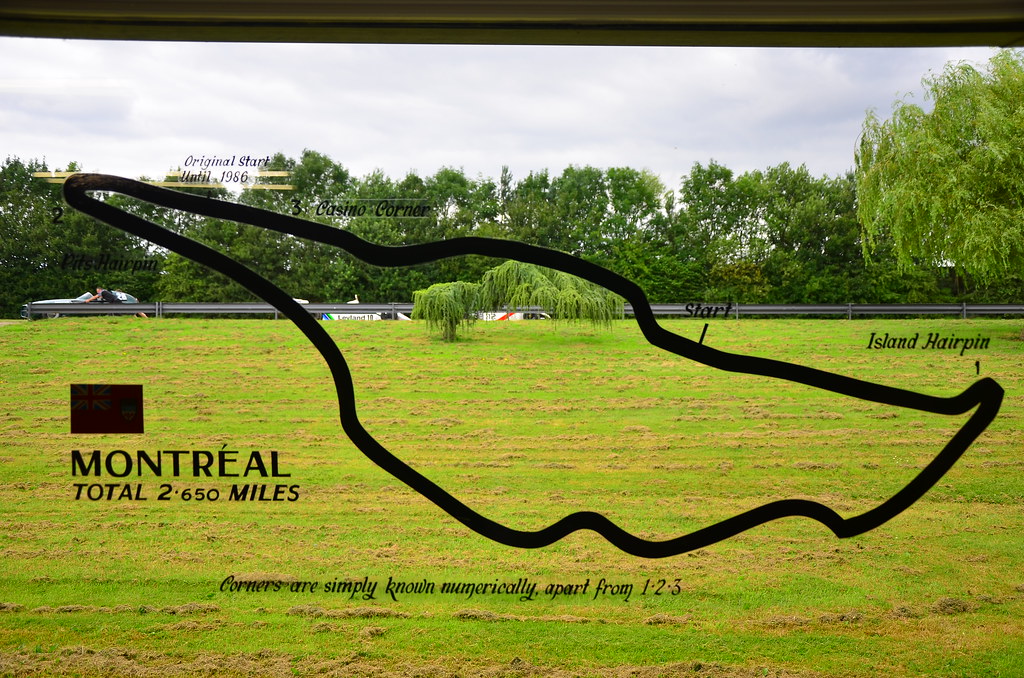
The Driving Skills At The Canadian Grand Prix Track
Driving a Formula 1 car is hard, but driving a Formula 1 car in the Canadian Grand Prix is even harder. It requires more skills in addition to driver keeping a cold mind.
Thus, the track comes with a feel like a stop-start race.
Hiowever, it has minimal lateral forces for the tires, and despite the longitudinal loads, the Montreal circuit is still the easiest on the tires.
So, it is up to the drivers to work hard, to accelerate and decelerate gently, but to carry the suspension.
However, the drivers aren’t the only who struggle. The F1 cars clamber so much on the Montreal Circuit that it is enough to withdraw soon. Because of the big stops and long starts, their power units and brakes are like a three-ring circus, especially the brakes, as drivers push their limits through the corners and into the hairpin.
The key to success at the Canadian Grand Prix track is stability under braking and traction coming through the corners before the long straight in the 3d sector. It is the best opportunity to pass, the decisive leg. The advantage gained by the racer before the straightaway pays off twice, opening the door to the lead before the Wall of Champions.
The second success factor is the car settings. The speed advantage doesn’t make more sense than the F1 car’s quick acceleration and downforce to change direction quickly.
Simply put, to win on the Montreal F1 circuit, the driver needs to be agile while the car needs to be more responsive.
In addition, the track got new surface. Although Pirelli promises there will be no difference, the average speed at the Canadian Grand Prix 2024 can be slightly faster.
However, faster or slower, the challenge is unique.
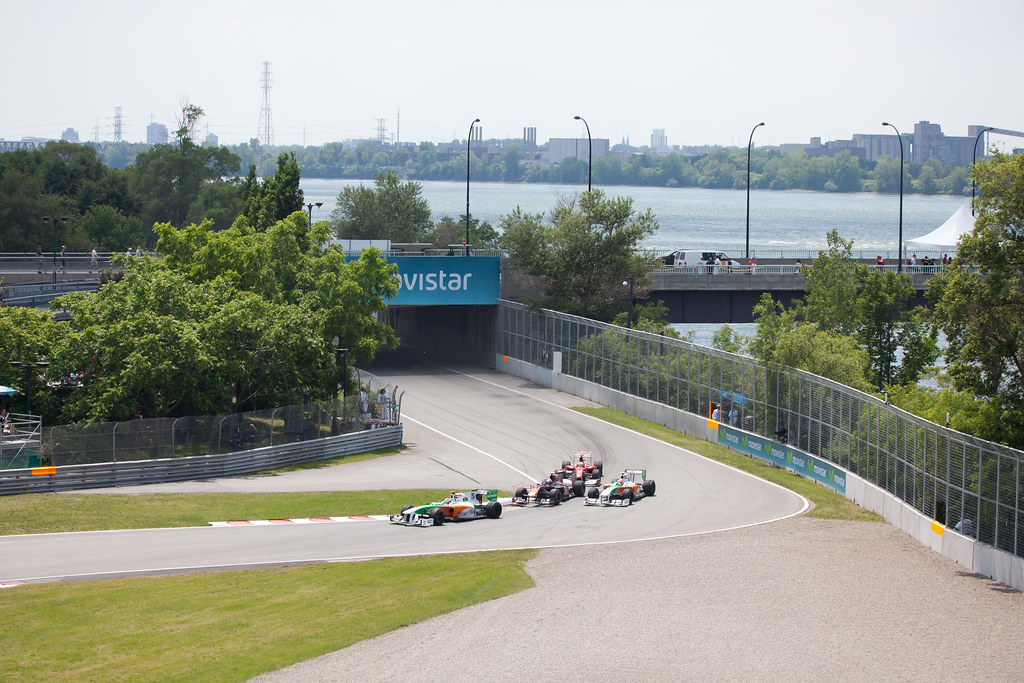
Drivers’ Statistics At The Canadian Grand Prix
The absolute lap time record at the Montreal Circuit is been topped by Sebastien Vettel, who ended it with 1:10.240 during qualifying, while Valtteri Bottas holds the fastest lap time of 1:13.078 during the race since the 2019 season.
Michael Schumacher and Lewis Hamilton are tied for the most wins at the Canadian Grand Prix with 7 each. If Hamilton wins the race in Montreal, he will break the Formula 1 record for most wins at a single track – 8.
However, Lewis Hamilton’s Mercedes is a little far from a championship-winning form.
Concluding: What Makes the Canadian Grand Prix A Good Track?
A few features set the Canadian Grand Prix track apart from others and make the race so good and exciting.
And the first one comes from its location. It is a place with specific atmospheric conditions where, despite the forecast, the possibility of rain always exists. As you know, rain in the race is that guest that can change everything.
The circuit’s layout is another factor. Yes, it may look easy, but there are overtaking opportunities everywhere if the driver is experienced enough. However, that is easier said than done.
The chains of chicanes, straights, and that hairpin are more than a good picture overall, but a very tough route, or better to say twisty adventure, which is a type of the Formula 1 car’s equipment are sad about, especially its brakes.
Success on the Montreal F1 circuit depends on driving skills and car set-up. If a team can cope both, they will be competitive.
All the above are worthy reasons why the Canadian Grand Prix track is a perfect venue for skilled drivers.
References
- Formula One World Championship Limited ‘Circuit Gilles-Villeneuve‘ https://www.formula1.com/en/racing/2024/Canada/Circuit.html (2024)
- Pirelli & C. S.p.A. – P.IVA, ‘New track surface in Montreal‘ https://press.pirelli.com/new-track-surface-in-montreal/ (June 3, 2024)

